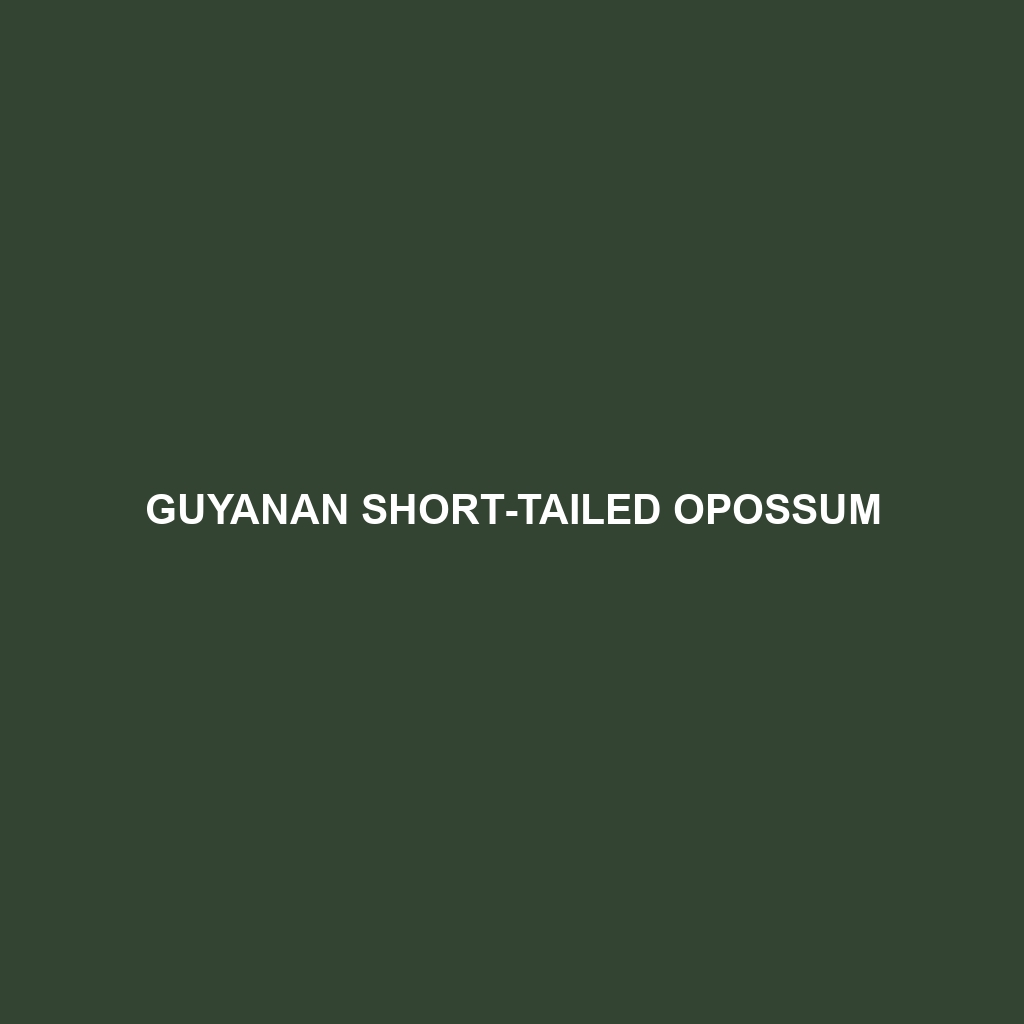The Guyanan Short-tailed Opossum (Monodelphis brevicaudata) is a small marsupial native to the tropical forests of Guyana and neighboring regions in South America. This nocturnal creature is known for its distinctively short tail, compact body, and remarkable adaptability to diverse environmental conditions.
Physical Characteristics:
Size: The Guyanan Short-tailed Opossum typically measures between 9 and 15 cm (3.5 to 5.9 inches) in head-body length, with a tail length of around 4 to 6 cm (1.6 to 2.4 inches).
Coloration: Their fur is generally a mix of greyish to reddish-brown on the dorsal side, transitioning to a lighter, often creamy or whitish hue on the ventral side. This coloration helps them blend into the forest floor and underbrush.
Special Features: As their name suggests, these opossums have a noticeably short tail compared to other opossum species. Their tail, while short, is prehensile and aids in balancing and gripping branches. They also have sharp claws and strong limbs, which make them adept climbers.
Behaviors:
Social Interactions: Guyanan Short-tailed Opossums are generally solitary animals. They exhibit territorial behavior and use scent markings to communicate and establish territory boundaries.
Feeding Habits: They are omnivorous, with a diet that includes insects, small vertebrates, fruits, and other plant materials. Their keen sense of smell helps them locate food in the dark.
Ecological Roles: This species plays a crucial role in their ecosystem by controlling insect populations and acting as prey for larger predators. Additionally, they help in seed dispersal through their frugivorous habits.
Habitats and Adaptations:
Habitats: The Guyanan Short-tailed Opossum thrives in a variety of environments, including tropical rainforests, savannas, and scrublands. They are often found in dense underbrush and near water sources.
Adaptations: Their nocturnal lifestyle helps them avoid predators and exploit the abundant night-time food resources. Their climbing skills and prehensile tail allow them to navigate through trees and shrubs efficiently. Furthermore, their acute senses of hearing and smell are vital for hunting and avoiding danger.
Conservation Status:
The Guyanan Short-tailed Opossum is currently listed as “Least Concern” on the IUCN Red List. Although they are not facing immediate threats, habitat destruction and fragmentation could pose future risks. Conservation efforts focus on preserving their natural habitats and monitoring population trends.
Fun Facts:
Unlike many other marsupials, the Guyanan Short-tailed Opossum does not have a pouch. Instead, the young cling to the mother’s teats and later ride on her back until they are old enough to fend for themselves.
These opossums have a relatively high reproductive rate, with females capable of producing multiple litters each year, contributing to their resilience in the wild.
They are known to enter a state of torpor, a temporary hibernation-like condition, to conserve energy during periods of food scarcity or adverse environmental conditions.
By understanding the unique characteristics and ecological significance of the Guyanan Short-tailed Opossum, we can better appreciate the diversity and complexity of life in South America’s tropical ecosystems.
